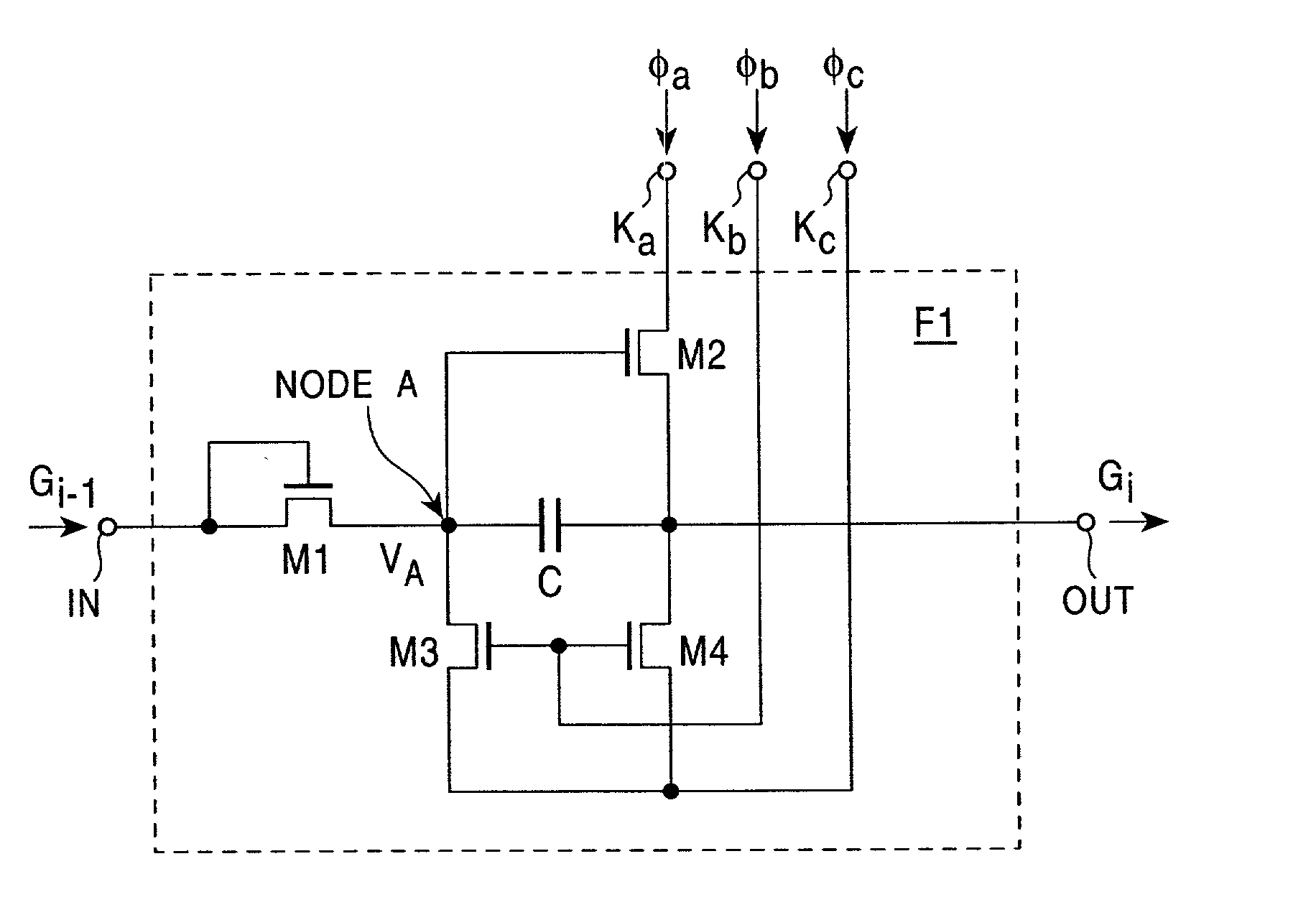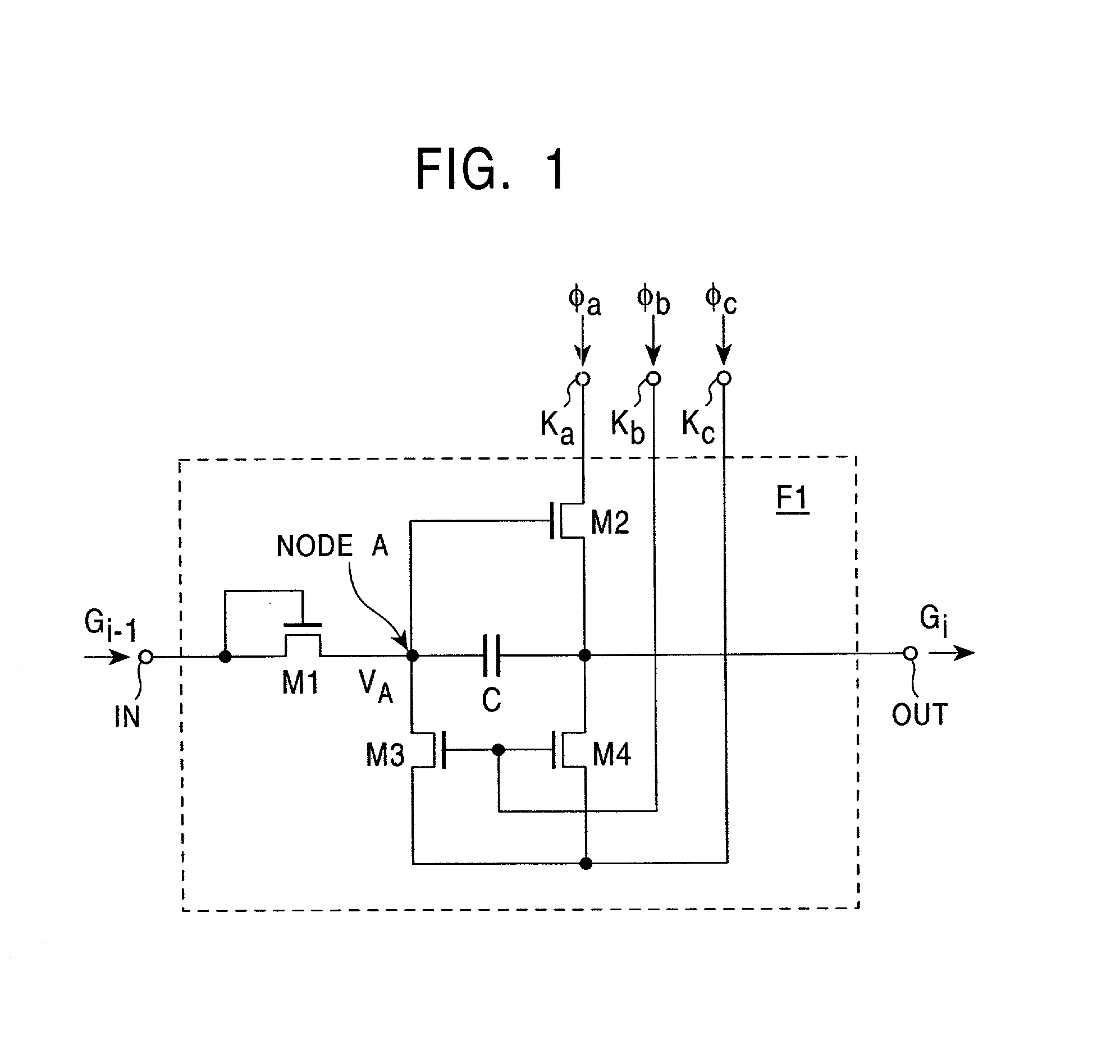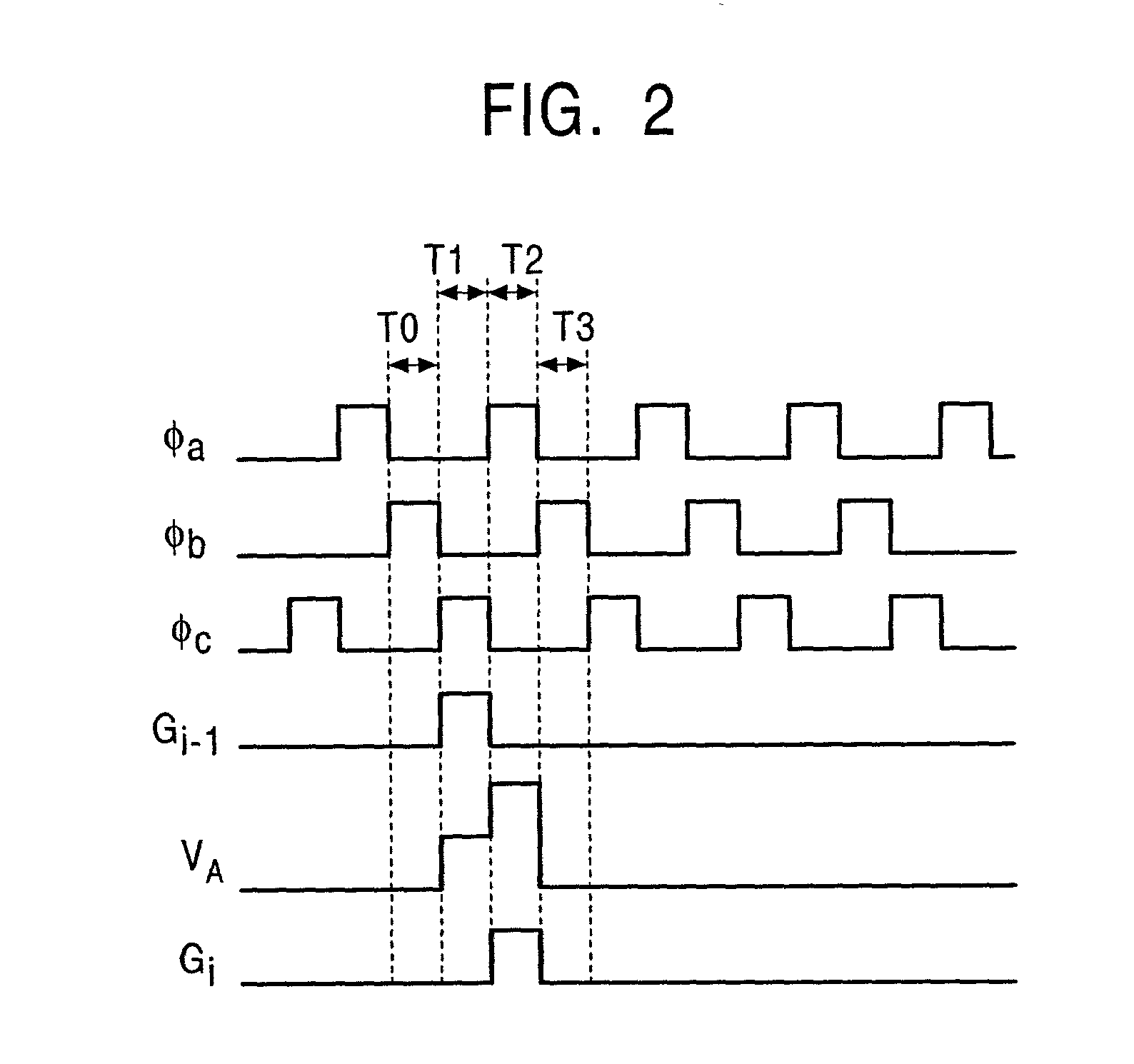Shift register having fewer lines therein, and liquid crystal display having the same
a shift register and fewer lines technology, applied in the field of shift registers, can solve the problems of increasing the number of lines in the shift register and the increase in achieve the effect of reducing the area required for wiring, reducing the influence of display capabilities, and reducing the size of the wiring area
- Summary
- Abstract
- Description
- Claims
- Application Information
AI Technical Summary
Benefits of technology
Problems solved by technology
Method used
Image
Examples
first embodiment
[0040] FIG. 1 is a circuit diagram which illustrates the internal circuitry of a stage F1 incorporated in a shift register according to the present invention. The stage F1 includes an input terminal IN at which a signal G.sub.i-1 output from a previous stage is input, an output terminal OUT at which a signal G.sub.i is output to a subsequent stage, and three clock input terminals K.sub.a, K.sub.b, and K.sub.c at which three-phase clock signals .phi..sub.a, .phi..sub.b, and .phi..sub.c are input, respectively.
[0041] The input terminal IN is connected to a first end (node A) of a capacitor C serving as a storage element via an MIS (metal-insulator-semiconductor) transistor M1 serving as a diode. A second end of the capacitor C is connected to the output terminal OUT. The clock input terminal K.sub.a is connected to the drain of an MIS transistor M2, the clock input terminal K.sub.b is connected to the gates of MIS transistors M3 and M4, and the clock input terminal K.sub.c is connecte...
third embodiment
[0059] FIG. 8 is an overall view of the shift register according to the The shift register is formed of a plurality of stages F'1, F'2, F'3, and the like, and the two-phase clock signals .phi..sub.a and .phi..sub.b are alternately input to the stages F'1, F'2, F'3, and the like in turn. For example, the clock signal .phi..sub.a is input to the stage F'1, and the clock signal .phi..sub.b is input to the stage F'2. A signal output from the next stage is input to the terminal K.sub.g of each of the stages F'1, F'2, F'3, and the like. For example, a signal G.sub.2 output from the next stage F'2 is input to the terminal K.sub.g of the stage F'1. This structure only requires the two-phase clock signals .phi..sub.a and .phi..sub.b to drive the shift register, thereby further reducing the number of lines in the shift register, while simplifying the clock generation circuit.
fourth embodiment
[0060] FIG. 9 is an overall view of a shift register according to the present invention. Three out of four-phase clock signals .phi..sub.a, .phi..sub.b, .phi..sub.c, and .phi..sub.d are supplied to each stage in the shift register. For example, the clock signals .phi..sub.b, .phi..sub.c, and .phi..sub.d are supplied to a stage F"1.
[0061] FIG. 10 is a timing chart of the stage F"1 shown in FIG. 9. The stage F"1 receives three of the four-phase clock signals .phi..sub.a, .phi..sub.b, .phi..sub.c, and .phi..sub.d, i.e., the clock signals .phi..sub.b, .phi..sub.c, and .phi..sub.d, and works similarly to the stage F1 according to the first embodiment.
[0062] FIG. 11 is a comparative table which illustrates the effect of reducing a delay with respect to the clock signals in the display. It is assumed that the display is a 6-inch VGA panel, and a gate driver (shift register) for driving scan lines has 480 stages with the overall length of approximately 91 mm. It is further assumed that the ...
PUM
| Property | Measurement | Unit |
|---|---|---|
| length | aaaaa | aaaaa |
| sheet resistance | aaaaa | aaaaa |
| width | aaaaa | aaaaa |
Abstract
Description
Claims
Application Information
 Login to View More
Login to View More - R&D
- Intellectual Property
- Life Sciences
- Materials
- Tech Scout
- Unparalleled Data Quality
- Higher Quality Content
- 60% Fewer Hallucinations
Browse by: Latest US Patents, China's latest patents, Technical Efficacy Thesaurus, Application Domain, Technology Topic, Popular Technical Reports.
© 2025 PatSnap. All rights reserved.Legal|Privacy policy|Modern Slavery Act Transparency Statement|Sitemap|About US| Contact US: help@patsnap.com



